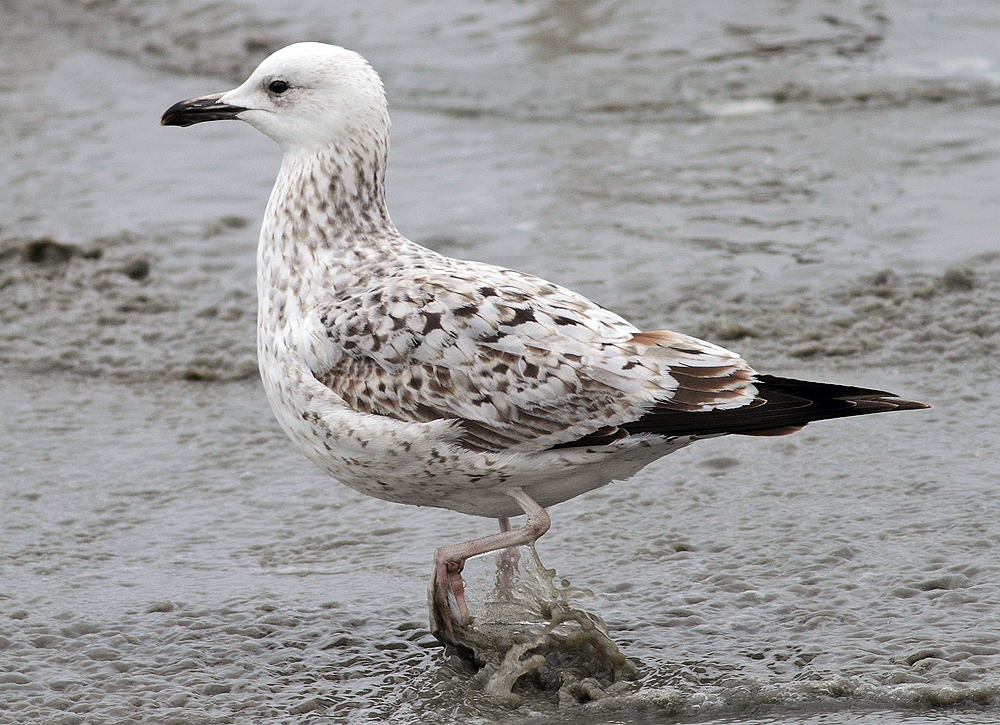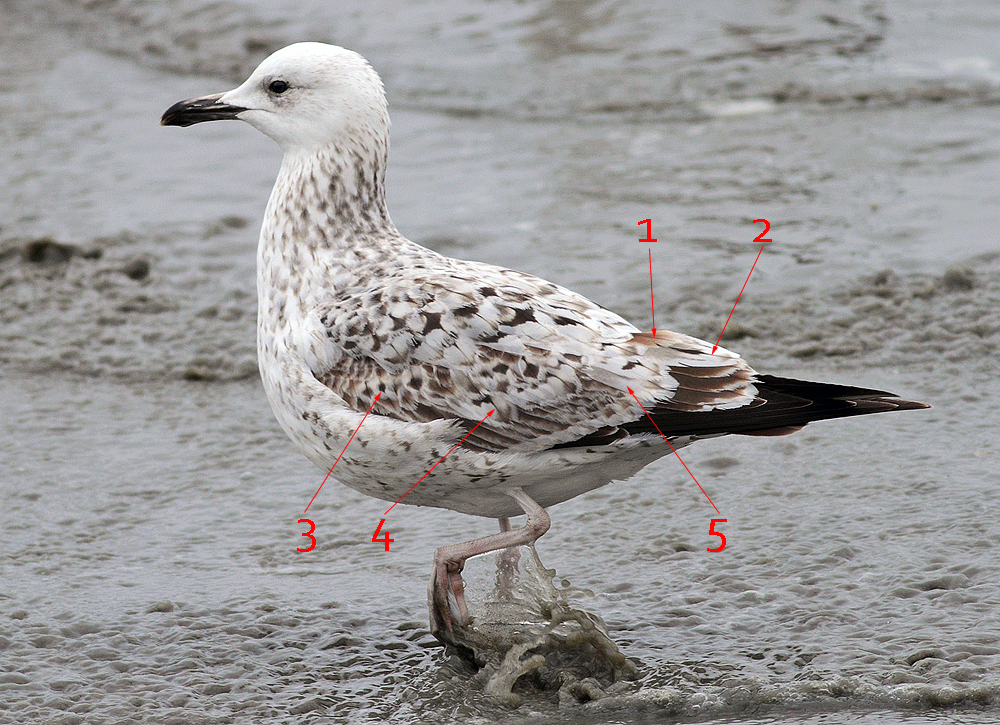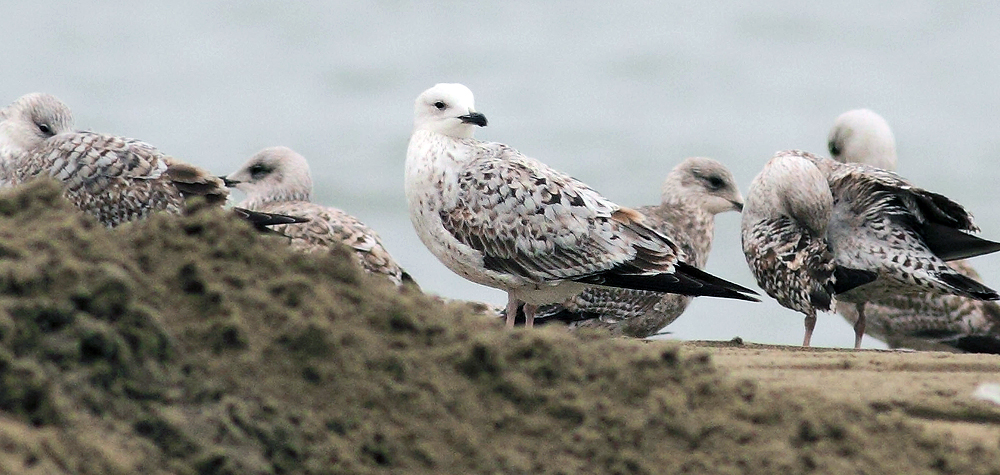 Larus cachinnans
Larus cachinnans
(last update:
Greg Neubauer
Marcin Przymencki
Albert de Jong
Mars Muusse
cachinnans plumages
Larus cachinnans 2cy, 14 March 2012, Texel, the Netherlands. Picture: Herman Bouman.
Contrastingly patterned bird.

below: same picture, with arrows to explain moult to 2nd gen feathers. Scorings as per table 2.
1. so-called "scapular covert". Often replaced late in the sequence. Here, still juvenile, faded brown and worn at fringes.
2. tertial #1: new 2nd gen. Tertials 2-5 also visible, which are still juvenile. (Moult: tertials = 1 new = trait score 2).
3. arrow points to 2nd gen feathers in the 'lesser covert region'. Pale brown feathers with a thin white fringe are juvenile feathers.
4. arrow points to 2nd gen feathers in the 'median covert region' (MC). Pale brown feathers with a thin white fringe are juvenile feathers: MC 1 juv, MC 2-9 2nd gen, MC 10-13 juv. MC 13 is last visible. (Moult: median coverts = measured as 8/13 = 60% of visible feathers, is category 51-75%; = trait score 1). However, the wing continues underneath the flank feathers, and the outer MC, not visible here, are most probably also juvenile, which brings down the measurement to only 44% (category 34-50%), and as trait score of 2.
5. arrow points to 2nd gen feathers in the 'greater covert region' (GC). GC 1-3 2nd gen, GC 4-15 juv. GC 15 is last visible. (Moult: greater coverts = measured as 3/15 = 20% of visible feathers, is category 10-33%; = trait score 3).


